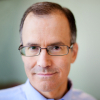“We Need an Army”: A National Plan for Contact Tracing in the US
Identifying people who have been infected with COVID-19 and reaching those they may have infected will require 100,000 additional workers in US cities and states, according to a $3.6 billion plan released April 10.
“We need an army to do this,” says Anita Cicero, JD, deputy director of the Center for Health Security at the Johns Hopkins Bloomberg School of Public Health, and a lead author of “A National Plan to Enable Comprehensive COVID-19 Case Finding and Contact Tracing in the U.S.” The plan was developed by the Center and the Association of State and Territorial Health Officials.
Contact tracing involves identifying people who are infected and then finding their recent contacts who may have been exposed. The goal is to interrupt the disease’s chain of transmission.
A single person with COVID-19 can be expected to infect up to 2-3 people on average. This means, without other interventions, one infected individual could lead to nearly 60,000 cases after 10 rounds of infections.
Battered by budget cuts and job losses for the past 15 years, state and local public health agencies need the massive infusion of federal support for contact tracers, according to the plan.
In an exclusive Q&A with Global Health NOW, Cicero explains why the funds are needed and how the plan would supplement local and state agencies’ contact tracing efforts.
Tell us in broad brush strokes what this plan is about and why the US needs a national contact tracing plan.
Testing for COVID-19 is the linchpin to almost every solution. But testing only identifies who currently has the disease. We need to do contact tracing in order to find out who else might have been exposed and to quarantine them—or to isolate them if they actually are sick themselves.
Right now, local and state public health agencies across the United States do not have near enough people to be able to trace all these contacts of cases. Their budgets have been cut by something like 30% over the last 15 years. And since 2008, they lost about 50,000 jobs—a quarter of the workforce. So, we need an army to do this.
Obviously the plan really depends on testing to know who is sick and then to find their contacts. Will this plan help solve the testing crisis?
This report really focused on how you do contact tracing because it's been a more neglected issue. For contact tracing, no one's getting that army ready. There's not money for them at the state and local level. They're not being interviewed, hired, prepared, trained.
There are some good signs though. Massachusetts just announced that they are partnering with an NGO to increase contact tracers by a thousand people. If each of those contact tracers would make 20 calls a day to the contacts, we could do 20,000 people a day that way. And that's what we need to be doing across the United States.
Assuming this plan were funded, how long would it take to get 100,000 additional contact tracers out there working?
I don't think it would really take that long because public health is used to training contact tracers. CDC can be a great resource in that regard. Johns Hopkins can be a great resource in that regard. We're putting together crash courses in contact tracing, and there are so many people who would like to help get us out of this crisis.
How much training is involved?
They teach the basics of disease transmission and how to handle different cases. They would need to be taught about other resources that are available for people who are quarantined and for their families. I don't know how many hours of training that is, but I think you could do it within a day.
What about the possibilities for technology? Apple and Google have announced a cooperation to enable apps for contact tracing.
We think that technology could be really helpful in terms of being a force multiplier. We did look at different tactics that have been used in Taiwan and Singapore and South Korea to help trace contacts, and in China. Some of them are more intrusive and less respectful of privacy than would be useful to try in the United States.
We would just need to be really mindful of respecting privacy and civil liberties issues around it. And we'd want to make sure that whatever technology is used, it really has the end users' needs in mind rather than, you know, here's a cool gizmo, figure out how to do that at your local level.
What about next steps? Have you already floated this idea with lawmakers, and how do you actually move this ahead?
We have shared it, and I know that there are many lawmakers who are really looking for solutions and have promised to look at it carefully. We'll just do what we can to continue to explain the need and to try to generate interest at a national level.
What challenges do you think the plan will face?
We should take care to respect the local communities' culture and sensitivities, and to think about equity issues and how best to implement these with vulnerable populations. Those things should not be footnotes, but really should be central in terms of how we implement these response measures.
Can you give us an example of working with a vulnerable population in that way?
We have to think of how you would do contact tracing and quarantining for the homeless, and about people in halfway houses or addiction centers and other places. [We need] to really think through how you would care for people who are in vulnerable housing or group housing situations. It might not be that everyone can safely quarantine at home, and I think we would need to have other safe, clean, attractive places for people to even voluntarily go to during their 2 weeks of quarantine, and to provide the resources they need to make that possible.
Ed. Note: This interview has been edited for length and clarity.
View GHN’s latest coronavirus news.
For the latest, most reliable COVID-19 insights from some of the world’s most respected global health experts, see Global Health NOW’s COVID-19 Expert Reality Check.
Join the tens of thousands of subscribers who rely on Global Health NOW summaries and exclusive articles for the latest public health news. Sign up for our free weekday newsletter, and please share the link with friends and colleagues: https://www.globalhealthnow.org/subscribe
Getty





